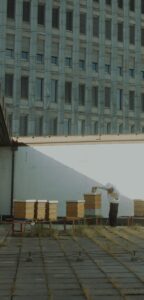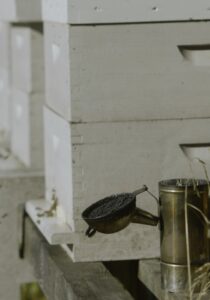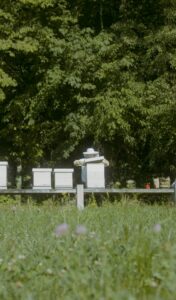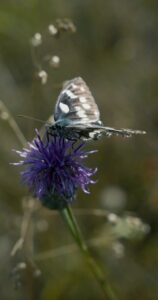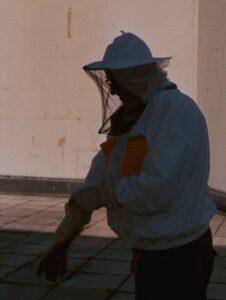
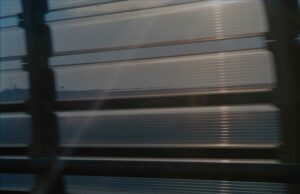
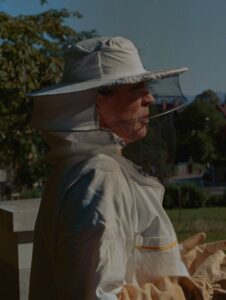
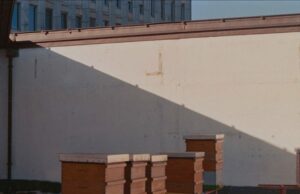
The
character
of
the
bee
suits
our
character.
Please enable sound
Episode 4
Humming of Cities and Bees
Humming of Cities and Bees
0% Loading...
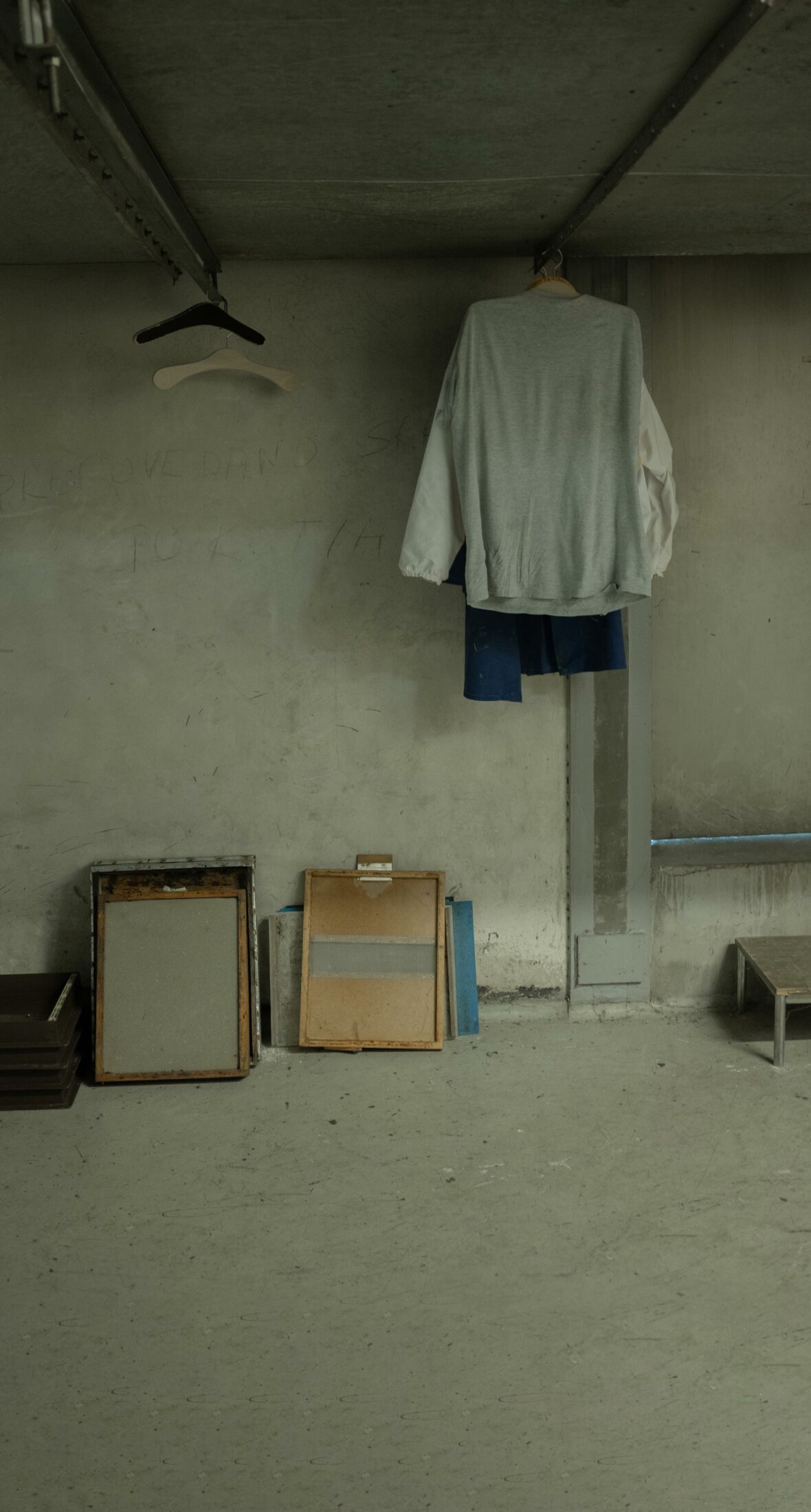
The Pollinators
of Slovenia
An interactive documentary
by Studio Airport
by Studio Airport
2023
About
Amid Slovenia’s thick forests of beech, fir, and maple, rolling agricultural land, and clear-running rivers there run ancient threads of relationship—between humans, pollinators, and the Earth—that still hum with life. In this interactive documentary, we travel deep into Slovenia’s landscape to learn how beekeepers and farmers are continuing to nurture this relationship in the face of climate change and habitat loss, finding new ways to nourish the vital creatures who in turn nourish us and the land.
Produced by
Emergence Magazine
Studio Airport
Director
Bram Broerse
Art Director
Maurits Wouters
Executive Producer
Emmanuel Vaughan-Lee
Writers
Anže Petelinšek
Bram Broerse
Emmanuel Vaughan-Lee
Cinematographers
Luuk de Kok
Mischa van Schajik
Photographers
Maurits Wouters
Carsten Pölking
Film Editor
Bram Broerse
Sound Designer & Music
Julian Tjon Sack Kie
Researcher
Anže Petelinšek
Graphic Designers
Anže Petelinšek
Bram Broerse
Sam Reith
Code by
September Digital
Developers
Hidde Meulenbeek
Wouter den Boer
Jan-Maarten Schot
Drone Operator
Mischa van Schajik
Color Grader
Maurits Wouters
Motion Designers
Bram Broerse
Hidde Meulenbeek
Narration Writer
Rachel Broomhead
Copy Editors
Michelle Moore
Lucy Wormald
Translator
Anže Petelinšek
Narrator
Tisa N. Herlec
Interviewees
Matjaž Novak
Stefan Novak
Roman Košale
Dr. Danilo Bevk
Manca Omerzu
Franc Petrovčič
Darja Jenko
Črt Butul
Interviewers
Anže Petelinšek
Bram Broerse
Cellist
Laurence Gaudreau
Voice Over Recording
SonicPicnic, Robin Schaefer
Additional Camera Operator
Ziga Krajnc
Special Thanks to
Beekeep Museum, Čebelarstvo Tigeli
Čebelarstvo Košale
Domač Butul
Dr. Danilo Bevk
Eko Prekmurc
Janšev Čebelnjak
Kmetija Omerzu
Landscape Park Tivoli
Ljubljana Botanic Garden
Slovenia Forest Service
Urban Beekeepers Association
17:03
In this episode of “Pollinators of Slovenia,”
we move to the green pocket-sized
capital of Ljubljana.
On the unlikely rooftop of a concert hall,
we discover a beekeeper
producing rich, pure honey.
While in a city park,
we learn how all of us can help keep
healthy habitats for bees in urban environments.
We begin with the concert hall rooftop.
I am Franc Petrovcic, a beekeeper.
When did I start beekeeping?
In 2003 the Apimondia World Congress
was held in Cankar Hall.
By the Roman wall stood an observation hive.
You could hear the bees buzzing,
you could even smell them.
It triggered a memory from my teenage years
when I helped my uncle, a beekeeper.
In between, life happened—university,
marriage, kids—
and I forgot about the bees.
In 2003, I discovered my passion for beekeeping.
That’s when I said to myself,
“I’d like to pursue this.”
I started beekeeping in 2005.
There were no courses available for new beekeepers
the way there are now.
That’s why I sought out knowledge
on the internet.
I came across an article about beekeeping
on top of the Paris Opera.
I told myself, when I have enough knowledge
and enough bee families,
I’ll set up an apiary on top of
Cankar Hall as well.
And so in 2003,
we put the first three families on the roof.
In the beginning, we were slightly worried.
We were unsure how well the
bees would do in a city.
How will they adapt to the passersby?
Will they even have enough food?
They found their way in the city
already during the first year.
There’s abundant grazing resources,
and the bees didn’t affect passersby.
Bees in Ljubljana have an abundance of food.
They can reach grazing resources for
a radius of about three kilometers.
Within our radius, we have rich grazing resources—
on Rožnik, on Šišenjski Hill,
in the Tivoli Park, on Castle Hill.
They fly sometimes as far as Golovec Hill,
where they can find acacia trees.
A lot of food is also provided from the big trees
in the old town—
large linden and maple trees,
as well as other melliferous plants.
There’s an abundance of foods in the city
from early spring to late autumn
that make the bees a lot more fit,
because there’s no monocultures.
After pouring the very first honey,
we wondered
what’s this urban honey even like?
With the help of the honey
company Medex,
we sent samples to the reference
laboratory in Bremen for analysis.
They showed that the honey is unblemished.
It has no residue of heavy metals, pesticides,
insecticides.
That makes sense—there’s no reason to use them in a city,
like you would in intensive agricultural areas.
They proved that this urban honey
is healthy—completely unblemished.
Recent years have shown how much
global changes are affecting animals,
including bees.
Due to spring frost,
last year’s honey harvest was devastating.
Changes in the climate shifted
the cycle of nature to start earlier,
but the frosts still came later
and they destroyed bee pastures.
That’s why every flower blossom on
city balconies and gardens matters.
They help diversify bee pastures,
which help bees in challenging years.
Especially like the past few years.
The municipality has decided
to skip one mowing
so that bees can graze longer on these meadows.
They’re also planting melliferous
trees in the city:
maple trees, linden trees.
They take care of the bees.
Bees take care of the biodiversity
of plants in nature.
According to the infamous Einstein saying,
If bees vanish from Earth, humanity will follow in four years' time.
Bees pollinate 50–60 percent of the plants
necessary for human nutrition.
And if bees were to disappear,
the production of food for humans would decrease significantly.
Other pollinators are also very
important for humankind.
They started disappearing,
but they are returning.
Bumblebees and other wild bees are returning because of human help.
About 50–60 percent of plants are pollinated
by wild pollinators.
They also depend on the protection of nature, their living environments,
less frequent mowing, less artificial fertilizers,
and healthy nature as a whole,
as well as care and a holistic approach to nature.
People are returning to living with nature
and must have an increasingly responsible
attitude towards nature.
Fully.
I’m Darja Jenko.
It’s my pleasure to work with the bees,
and to live with the bees, also.
I have a very long history with bees,
since my early childhood,
when I got to know more about
bee products, especially honey,
which was a lot more rare
than it is nowadays.
We used it while we were sick,
because we had two neighbors
who were beekeepers
and we got the honey from them.
My father usually helped them
move the bees
from one location to another.
When my father became of age,
I started helping him with bees.
I noticed that when I was with bees,
if I ever had a headache,
the headache went away.
It was very good for me,
and I decided to buy my own bees.
It was interesting—while I was looking at
the behavior of these bees,
the character of the bees
suited our characters,
and it was a lot of fun for me.
A bee, for me, is almost
like a human being.
Now that my son has grown up and
he doesn’t need my attention
as much as he did when
he was younger,
the bees have become my children.
I take care of them like you
should take care of your baby
when they need your care.
I have a special respect for the bees,
and I think I will keep that.
I think for me
what was most special was
when I saw that they behaved
same as a human being.
When they feel in danger, they can sting.
They can be more wild.
If they feel good and comfortable,
they are very calm.
They work, they do their job, and they enjoy it.
I think they also enjoy.
Because sometimes, when you look at them—the way they dance.
Maybe we’ll also see
the bees dancing the dance.
They sometimes dance close to the hive.
They inform the other bees with dancing:
where there’s nectar, or where to go,
which place to look
while the colony is duplicating.
Because sometimes
the bees have to leave their home.
If we have two queens,
the elder queen has to leave
the hive with other workers.
They abandon that hive,
and they need to find their new home.
There’re a lot of interesting things
about a bee’s life
that most amaze me.
The bees communicate with a dance
between each other.
The most important subject is the queen.
She’s laying eggs and taking care of the reproduction.
Then we have workers.
Workers work all the time.
They have various functions in the hive.
And we have drones also.
Drones are male bees. They are useful
for semination of the queen.
Workers do most of the work in the hive.
If the cities are green, like Ljubljana is—
it’s a really beautiful green place,
especially this place.
It’s really beautiful, and green enough.
In some parts of the season,
they have enough food.
In other parts of the season,
when there is not enough food,
we need to feed them.
For example, now when there’s no rain
and it’s too dry, the nectar
is not being produced
as much as it is when
the flowers have enough water.
That’s the problem many times,
so now we have started feeding the bees
and preparing them for the winter
so they will survive.
Because we need to help them to survive
if we want to keep the colony.
We need to help them
many times.
If you cut the grass three, four, five,
sometimes even ten times a year—
Farmers need to cut grass
because they need it
for the animals that we eat.
In those areas, there are
no bumblebees.
Normally there are no bees.
It’s a green desert.
So we should take care of the nature
if we want to keep all those pollinators
that are here now.
It’s really helpful for the bees
to cut grass later.
Then the flowers can bloom.
And I’d even suggest not just to wait
for the end of blooming season to mow
but to let the flowers produce seeds.
In that case, you don’t need
to spread the seeds once again.
I think that’s the best way—
don’t just wait for the flowers,
but also for the seeds.
And then cut it. That grass is
not useful for feeding animals normally,
but it is useful for
the reparation of the grasslands.

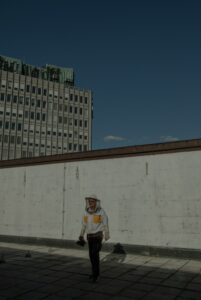
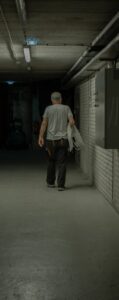
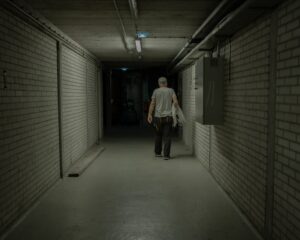




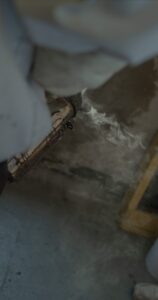
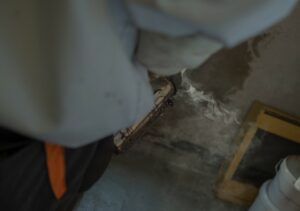
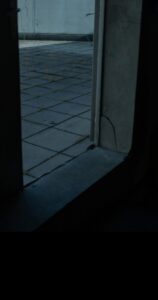

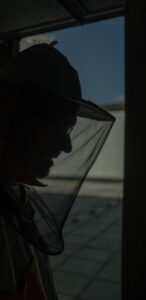
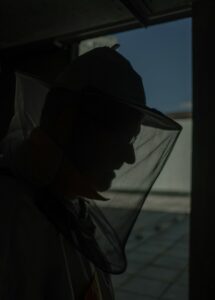
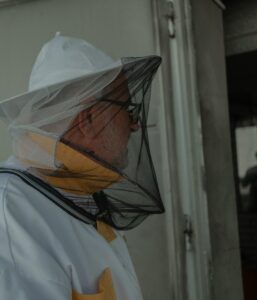
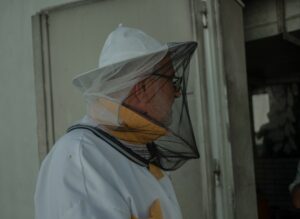
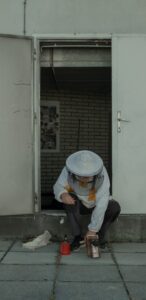
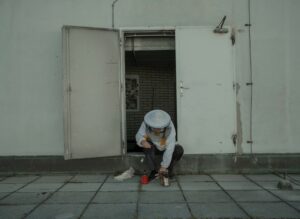
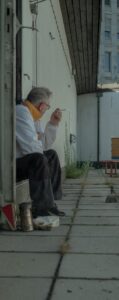
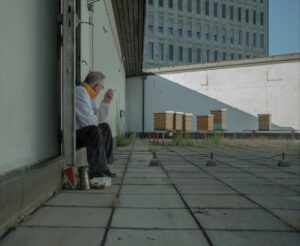
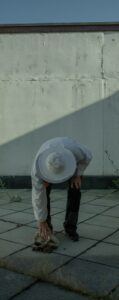
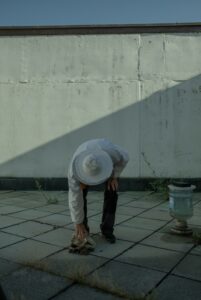



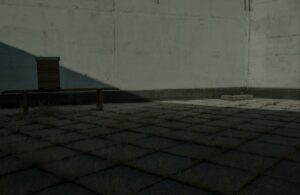

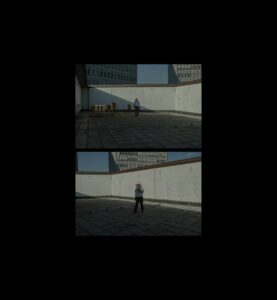
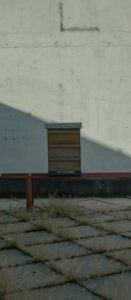


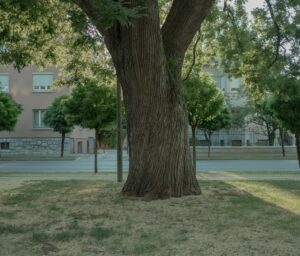

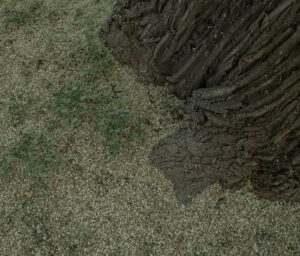
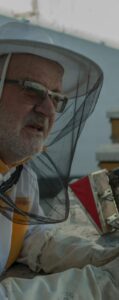
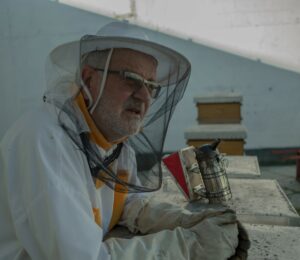
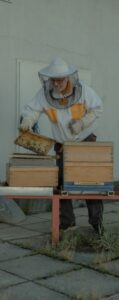
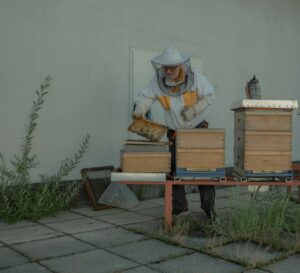
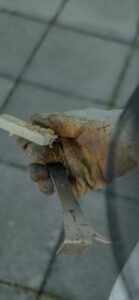
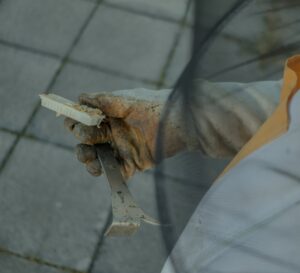
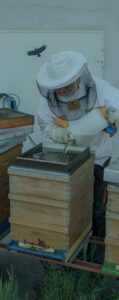

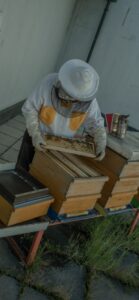
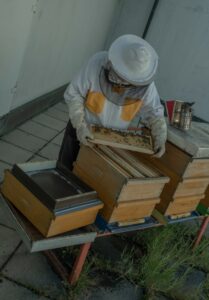
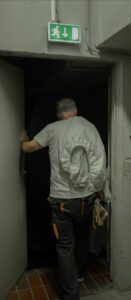
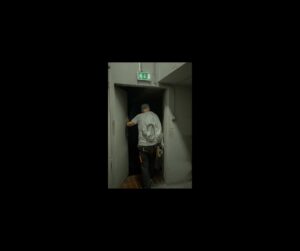
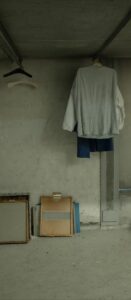
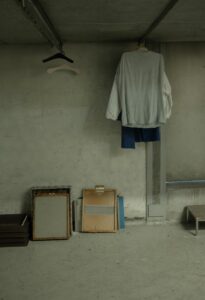
EP.04
Humming of Cities
and Bees
Episode 4
Part (1/2)
The Concert Hall Rooftop


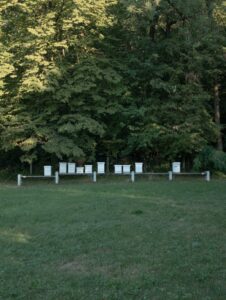
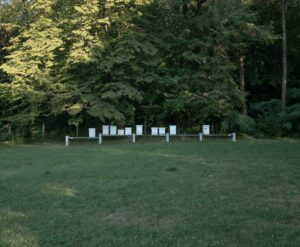

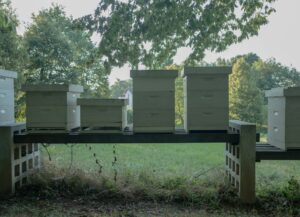

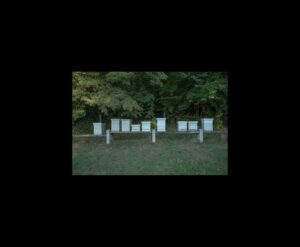

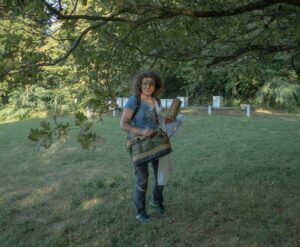
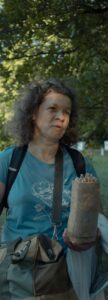




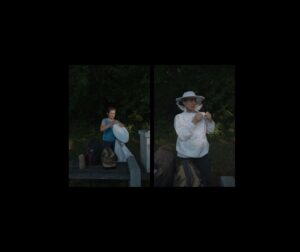

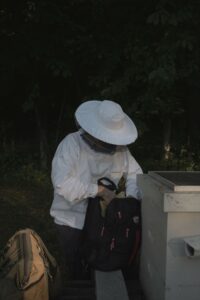
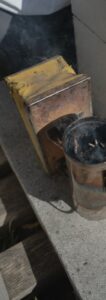
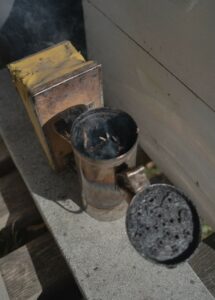

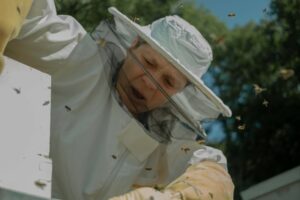
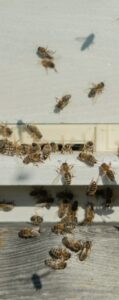
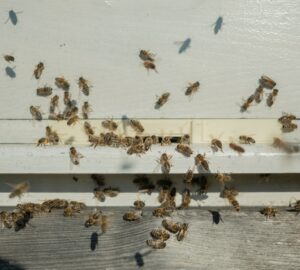

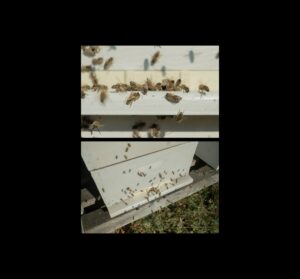
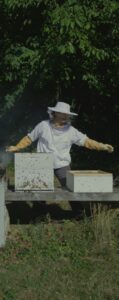
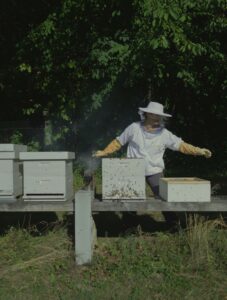



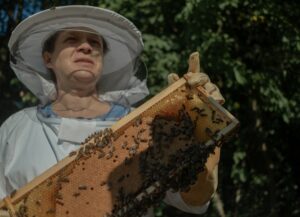

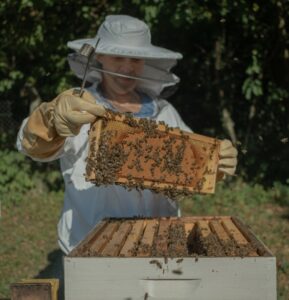


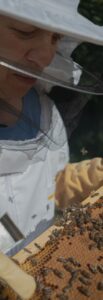
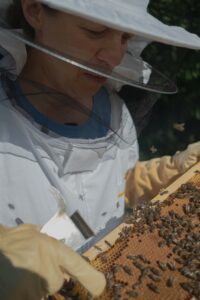

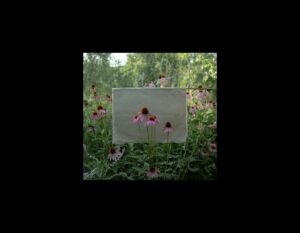
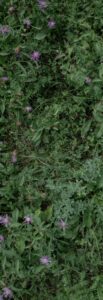
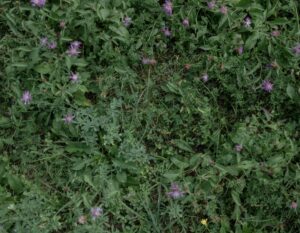




EP.04
Humming of Cities
and Bees
Episode 4
Part (2/2)


